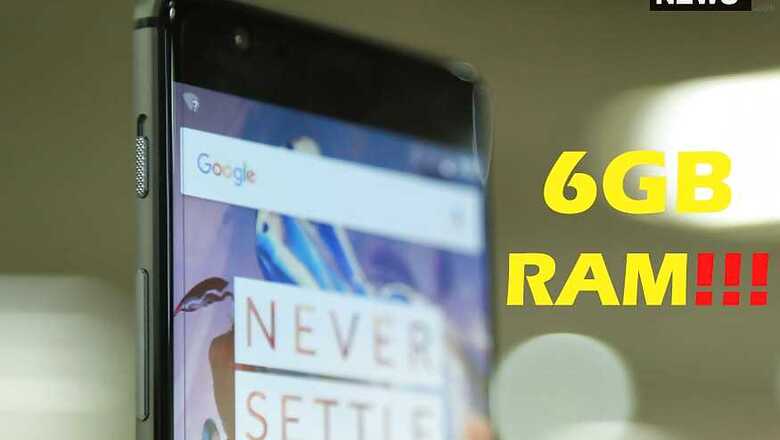
views
In 2016 phones makers have gone berserk with RAM. OnePlus launched the OnePlus 3 with 6 GB RAM and LeEco followed with the Le Max 2. From 512 MB RAM in 2010 the modern-day smartphone has come to have 6 GB RAM. That's more than many modern-day PCs.
We at News18 Tech try to break it up the big RAM mystery for you.What is RAM?
RAM is short for Random Access Memory. It's the the memory that stores the data for a very short time period in order for a computing device to finish its function. It's basically a catalyst for the hard drive space on a PC or your phone's internal storage. Small packets of data are easier to access on the RAM by the chipset than actually mining it from the phones storage. Phones usually use a SSD for storage and RAM works in the same way as it works on your PC.
RAM on a phone also helps in running background apps without any lags as the chipset can access the RAM faster than it can search for data on its SSD. Why Do Phones Have 6 GB RAM?
Many flagships phones now have 64-bit processors, that basically allows a lot of data to be processed in a minimal time frame. Most Android phones, because of the operating system, expands into the RAM available. This basically means there is more buffer for the processor to give an optimum performance to the user's tasks. You can keep more apps running in the background on your phone without a drop in performance. This phenomenon can be seen by a simple test. Close all apps on your phone and then check the RAM status. Your phone will be using about 60% of the RAM even when it's idle.
The Android OS is also expanding fast. KitKat could manage operations with just about 1 GB RAM but an OS like Marshmallow requires more RAM to ease the usability. Also manufacturers go for more RAM so that the device can be future-proofed at least for a couple of years.How Much RAM Do You Need?
Android phones now have fast processors, so the recommended RAM required for you to have a clutter free experience is 2 GB. If a phone runs on Android Lollipop and comes with 1 GB RAM it is likely to suffer from a performance hit. The glitches that you'll mainly notice is extended app loading time and visible lags in screen transition when you hop from one app to another. So any phone with a minimum 2 GB RAM will give you a lag free experience 99% of the time. Anything above that will is a bonus.But an iPhone Comes With Less RAM?
Android Operating system is an open source system that allows third party apps to utilise the hardware according to their needs. Apple's iOS has a much tighter grip on that. They make third party app developers comply to their code of RAM utilisation on the iPhone. So an iPhone 6 can have 1 GB RAM and still give you a lag free experience but the iPhone 6s now uses a 2 GB RAM to optimise operations in sync with the more powerful A9 processor.
Basically Apple can control how the marriage between the software and hardware will be. For Android devices there are multiple manufacturers with different hardware specs and often with their own software on top of the operating system.
To sum it up, Android has an open marriage with the RAM of your device but on an iPhone it's a committed relationship.




















Comments
0 comment